Today, at the Living Planet Symposium, ESA revealed the first stunning images from its Biomass satellite mission—marking a major leap forward in our ability to understand how Earth’s forests are changing and exactly how they contribute to the global carbon cycle. But these inaugural glimpses go beyond forests. Remarkably, the satellite is already showing potential to unlock new insights into some of Earth’s most extreme environments.
Biomass—an Earth Explorer research mission developed within ESA’s FutureEO program—was launched less than two months ago. This new mission is, therefore, still in the process of being commissioned, but its first set of images are stunning nonetheless.
ESA’s Biomass Project Manager, Michael Fehringer, commented, “As is routine, we’re still in the commissioning phase, fine-tuning the satellite to ensure it delivers the highest quality data for scientists to accurately determine how much carbon is stored in the world’s forests.
“Biomass is equipped with novel space technology, so we’ve been closely monitoring its performance in orbit, and we’re very pleased to report that everything is functioning smoothly and its first images are nothing short of spectacular—and they’re only a mere glimpse of what is still to come.”
Biomass is the first satellite to carry a P-band synthetic aperture radar, its signal capable of penetrating forest canopies to measure woody biomass—trunks, branches and stems. These measurements serve as a proxy for carbon storage, the assessment of which is the mission’s primary objective.
While it settles into its life in orbit, ESA’s pioneering Biomass mission is already returning data. The satellite, its instrument and systems are still being calibrated so these first data cannot yet be used to quantify carbon or support scientific advances, but they do show that Biomass is well on track to achieving its goals.
ESA’s Director of Earth Observation Programs, Simonetta Cheli, said, “Looking at these first images, it’s clear to see that our Earth Explorer Biomass satellite is set to deliver on its promise.
“We fully expect that this new mission will provide a groundbreaking leap in our ability to understand Earth’s forests—combining cutting-edge radar technology with the scientific excellence that will unlock vital insights into carbon storage, climate change, and the health of our planet’s precious forest ecosystems.”
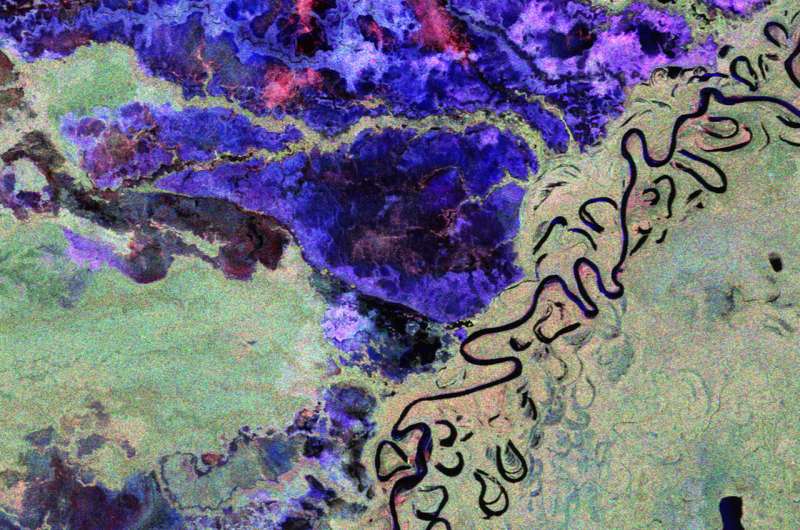
Biomass’ first image, showcased above, features part of Bolivia. Bolivia has experienced significant deforestation, ranking among the highest globally for primary forest loss. Although there are complex reasons at play, this is primarily driven by forest clearance for agricultural expansion.
This vibrant image was created using the radar instrument’s different polarization channels, with each color revealing distinct characteristics of the landscape. For instance, green hues mainly represent rainforest, red hues forested floodplains and wetlands, and blue–purple is indicative of grasslands, while black areas are rivers and lakes.
In the Amazon Basin, some rivers run wild—unhindered by dams, they are free to meander, but some more dramatically than others. The image captures one such wanderer, the Beni River, which flows from the Andes Mountains across the Bolivian lowlands northeast towards Brazil.
The true strength of the Biomass mission lies not in identifying features from a single image, but in its unique sampling technique and ability to combine multiple observations of the same area to reveal forest height and biomass. This enables scientists to accurately quantify forest carbon stocks and better understand the role of tropical forests in the global carbon cycle.
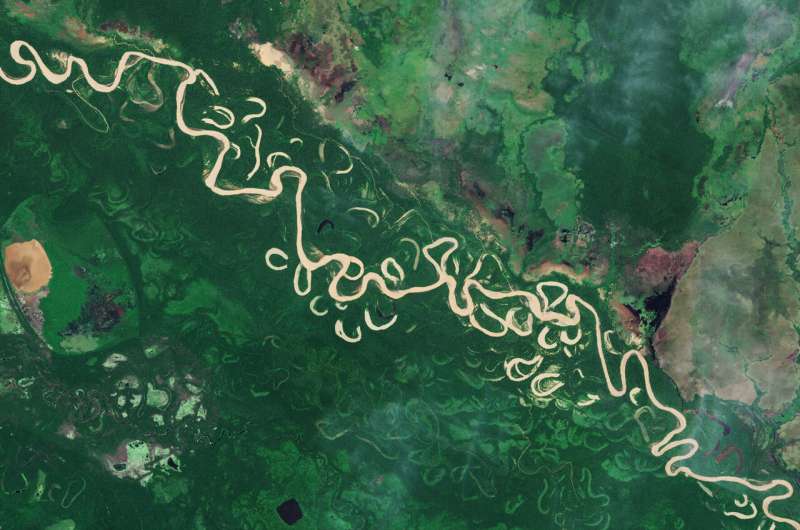
The second image, an image in two parts, is the same capture of Bolivia from Biomass but featured below an image of the same area from Copernicus Sentinel-2.
Although the images appear visually similar, the Biomass image offers significantly more information for quantifying forest carbon stocks. This is primarily thanks to its long-wavelength radar, which can penetrate the canopy and characterize the entire forest structure. In contrast, the optical Sentinel-2 image captures only the top of the canopy.
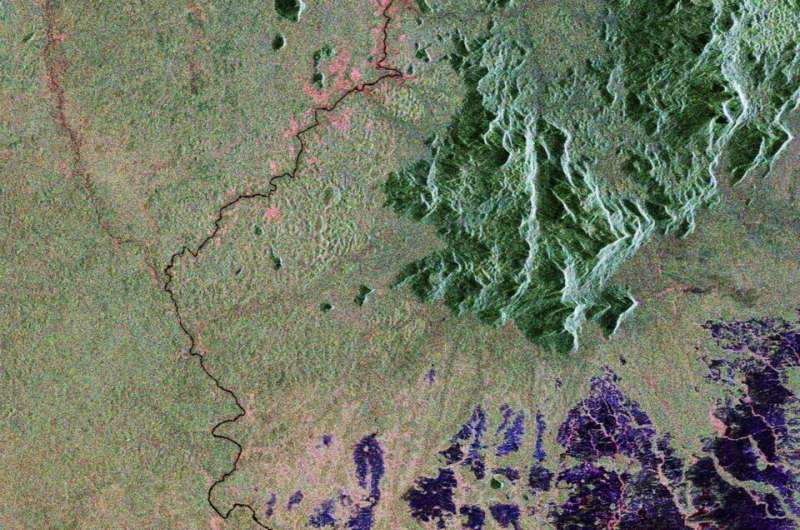
This third image is actually the very first acquisition that Biomass returned. It offers another striking view of the Amazon rainforest, but this time over northern Brazil.
In the southern part of the image, pink and red hues reveal the presence of wetlands, highlighting Biomass’ ability to penetrate dense vegetation and detect features down to the forest floor. The dominance of red tones along river indicates forested floodplains, while the northern area, depicted in rich green, reveals more rugged topography and dense, continuous forest cover.
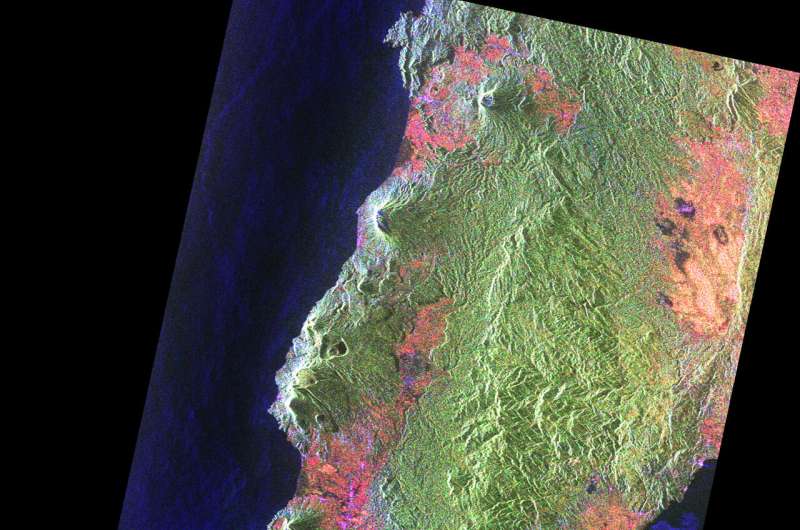
The fourth image features tropical forest on islands in Indonesia. This is the Halmahera rainforest, situated in mountainous terrain, much of which has volcanic origins. Several volcanoes remain active in the area, including Mount Gamkonora, visible near the northern coast in this image.
This particular image clearly demonstrates that, beyond providing insights into rainforests, the Biomass P-band radar also reveals topographic features, as its long wavelength can penetrate down to the forest floor.
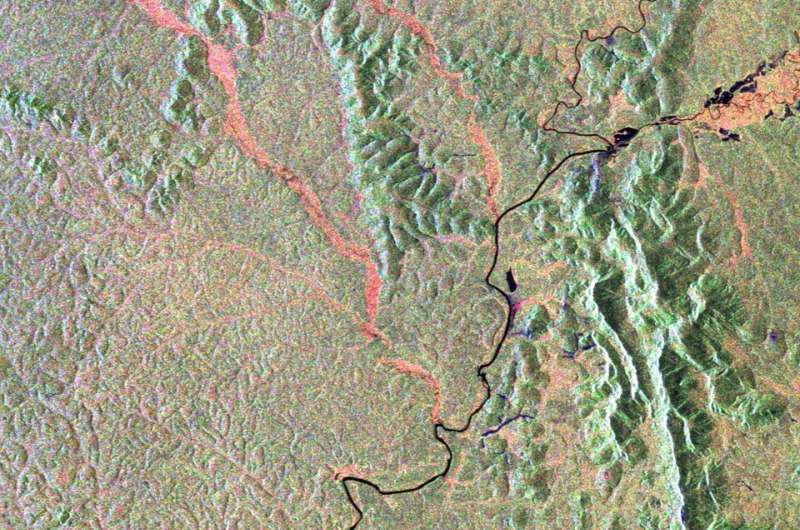
The fifth capture features Gabon in Africa. The Ivindo River, which is vital to the health of the rainforest, is clear to see in this striking image. Other than the river and tributaries, the image is predominantly green, representing dense forest. The visibility of distinct topographical features in this image further underscores the radar’s capability to image through forest canopies to the terrain underneath.
Biomass also offers opportunities to explore other aspects of our planet, as the last two images below demonstrate.
The radar is expected to be able to penetrate through dry sand by as much as five meters. Data can, therefore, be used to map and study sub-surface geological features in deserts, such the remains of ancient riverbeds and lakes. This will help understand the past climate and also help prospect fossil water resources in desert regions.
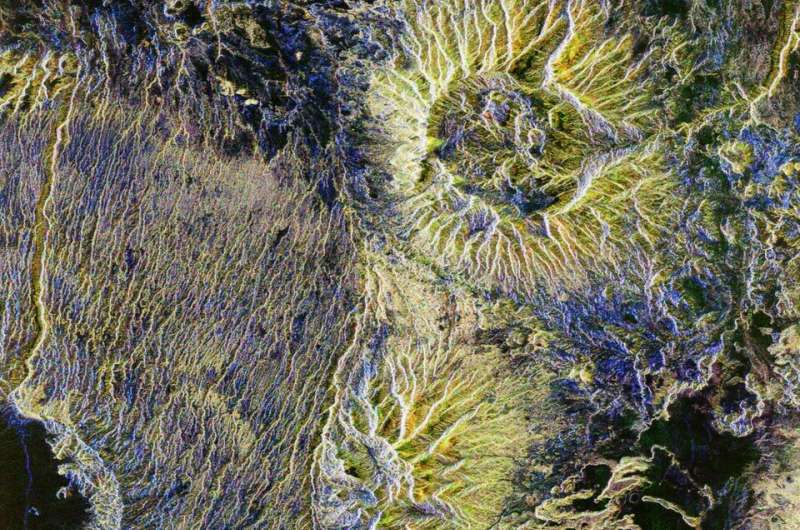
Indicating that this can indeed be achieved, the sixth image, above, shows the stunning structure of part of the Sahara Desert in Chad. This image covers part of the Tibesti Mountains, a mountain range in the central Sahara, mainly located in the extreme north of Chad.
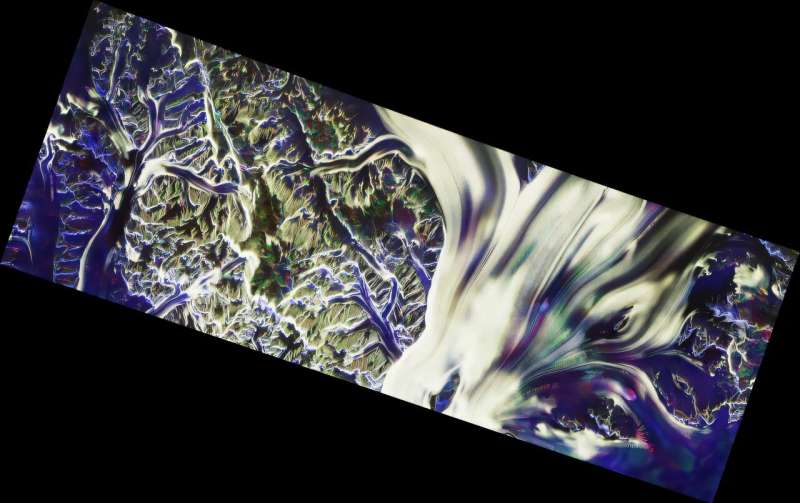
The last image shows a portion of the vast Antarctic Transantarctic Mountains with one of the large ice streams, Nimrod Glacier, flowing into Ross Ice Shelf.
The long wavelength of Biomass’ radar allows for deeper penetration into ice, enabling the retrieval of valuable information on ice velocity and the internal structure of the ice, capabilities that shorter wavelength radars cannot achieve effectively. And this image indicates that this could be a possibility.
Citation:
Biomass satellite returns striking first images of forests and more (2025, June 23)
retrieved 23 June 2025
from https://phys.org/news/2025-06-biomass-satellite-images-forests.html
This document is subject to copyright. Apart from any fair dealing for the purpose of private study or research, no
part may be reproduced without the written permission. The content is provided for information purposes only.

